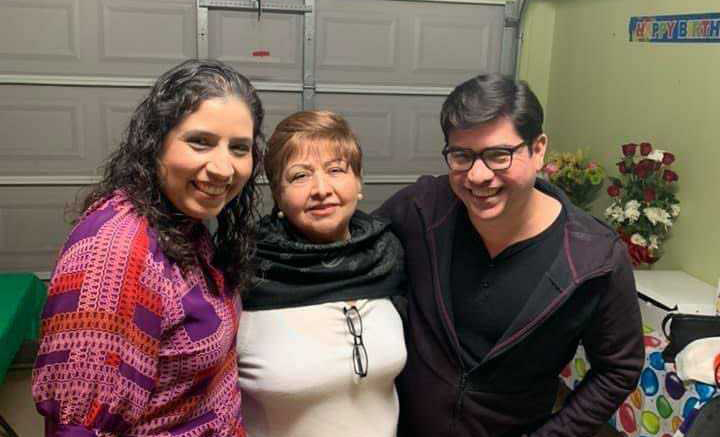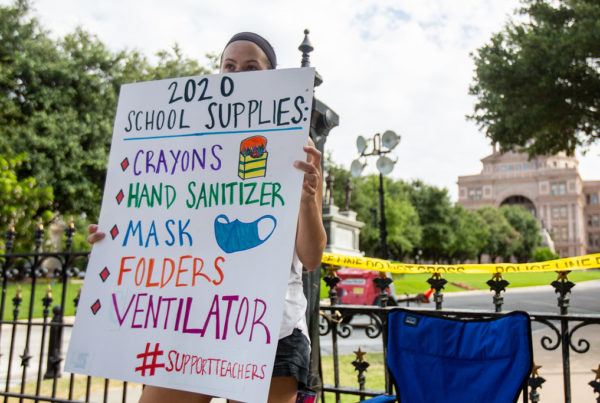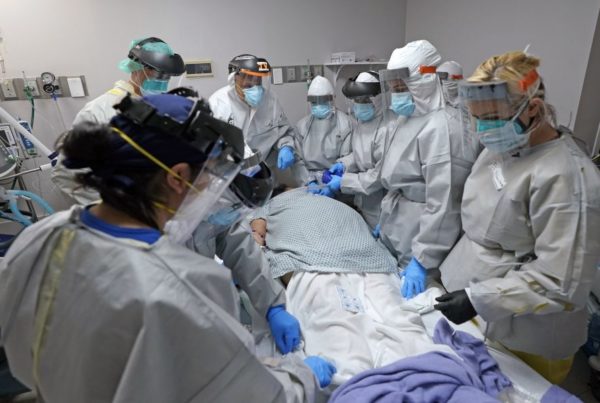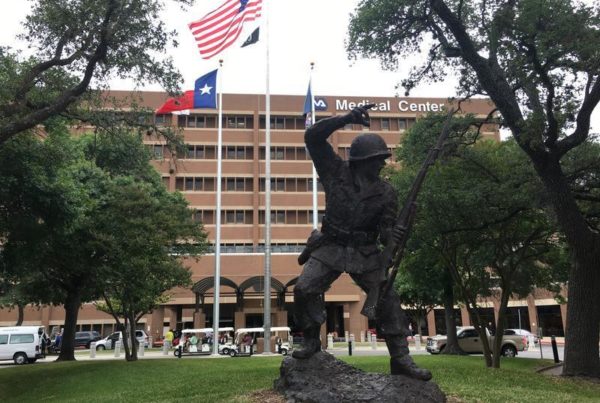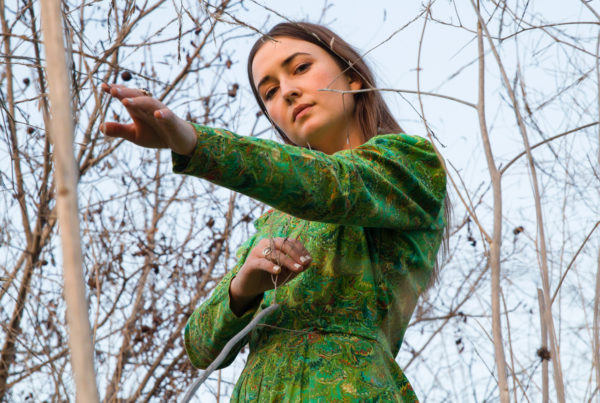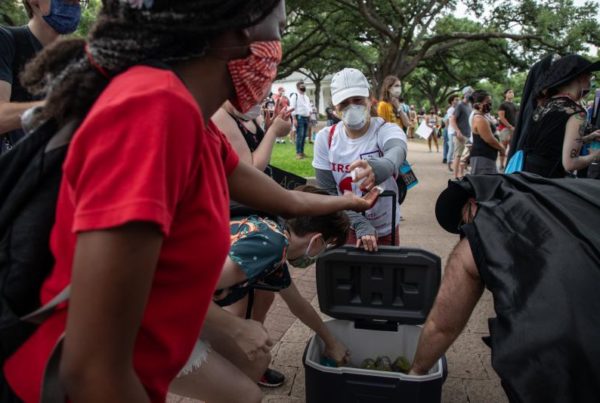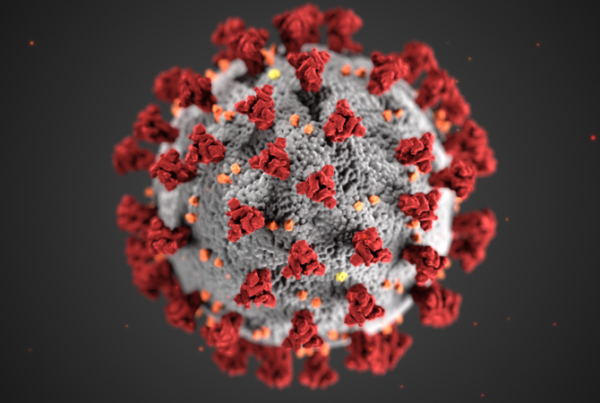As the numbers of COVID-19 cases continue to grow throughout the U.S., Texas’ Hispanic communities are particularly vulnerable to the spikes in positive cases and fatalities. The large number of essential workers, and the culture of close-knit communities, can aid the transmission of the virus.
New York Times reporter Edgar Sandoval grew up in the Rio Grande Valley and his extended family still lives there. Sandoval was reporting on the impact of the virus in the area, when a number of his family members tested positive.
In late June, the reporter remembers receiving a daunting text from his sister. It essentially said, “all the Sandovals have COVID,” he told Texas Standard host David Brown.
The Sandovals suspected they had contracted the virus on a medical road trip to Houston.
“My mother had to go for a mammogram and, you know, us being a close-knit family like most people here, the trip takes like ten people,” Sandoval said. “Six people, to be exact, in my family.”
Large family gatherings are an important part of the culture in Hispanic communities on the Valley, which can contribute to the spread of COVID-19.
“Usually, it’s one young person that gets infected somehow in the streets. And then they go to a family gathering and then they unwittingly infect other people,” Sandoval said.
Fortunately, most of his family members have now recovered. Sandoval’s mother was recently released from the hospital and is living at home and using oxygen.
Web story by Sarah Gabrielli.


